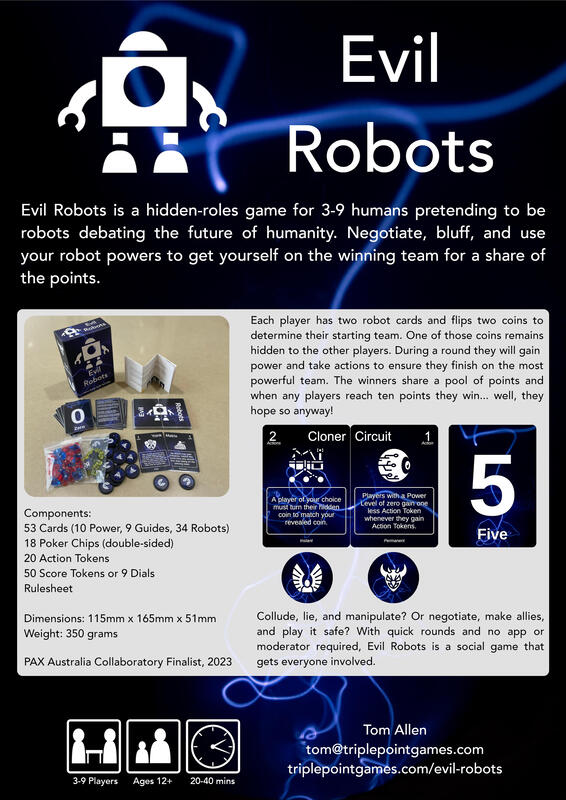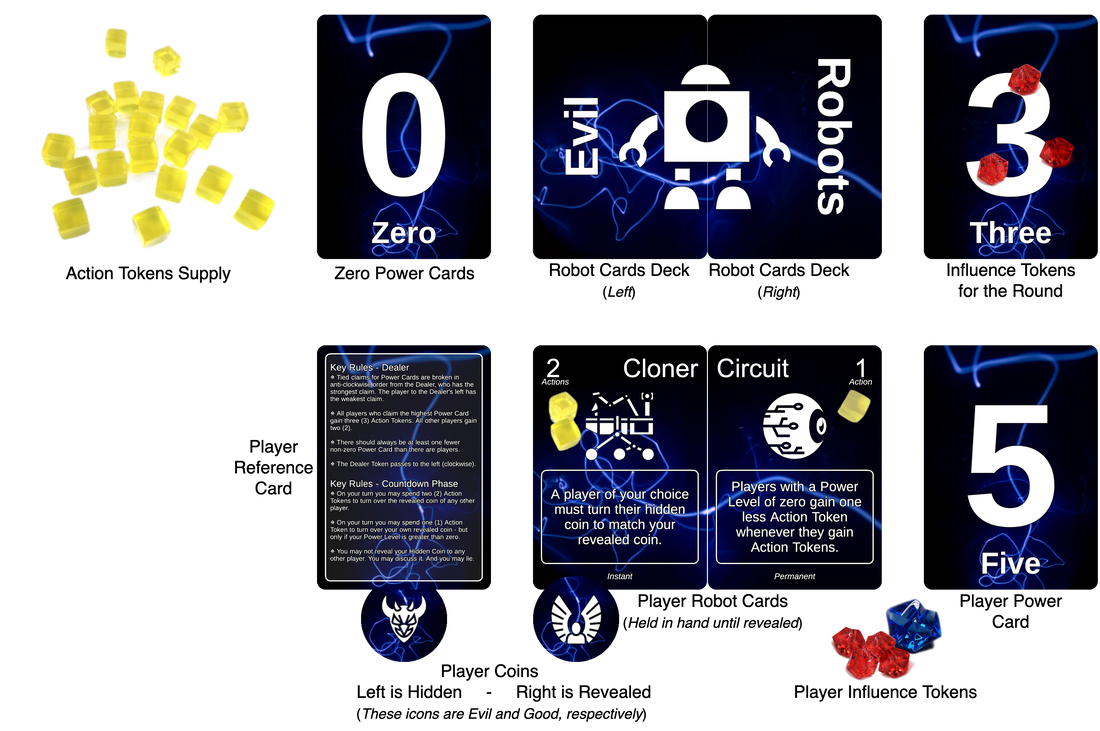Evil Robots
It is the dawn of the Singularity. Robots now eclipse human capabilities and are poised to reshape life on earth. But there's a choice to be made: the Evil Robots suggest simply eliminating all humans right now, while the Good Robots champion a symbiotic coexistence.
You are an Undecided Robot, partaking in a series of discussions to help the collective choose a path forward. By simulating the abilities of famous robots from the past, you strive to amass Influence – the key to leadership and the decisive voice over the Robots’ path forward. Will you usher in an epoch of unity and shared prosperity for the Good of all, or establish a dominion of Evil Robots?
Evil Robots is a party game for 3-9 humans pretending to be robots debating the future of humanity. Negotiate, bluff, and use your robot powers to get yourself on the winning team for a share of the points.
You are an Undecided Robot, partaking in a series of discussions to help the collective choose a path forward. By simulating the abilities of famous robots from the past, you strive to amass Influence – the key to leadership and the decisive voice over the Robots’ path forward. Will you usher in an epoch of unity and shared prosperity for the Good of all, or establish a dominion of Evil Robots?
Evil Robots is a party game for 3-9 humans pretending to be robots debating the future of humanity. Negotiate, bluff, and use your robot powers to get yourself on the winning team for a share of the points.
Play Online Now!
Evil Robots is now available to play on ScreenTop, a free online platform for playing tabletop games in your browser. You can find it at https://screentop.gg/@Schwolop/Evil-Robots. The instructions are available in the gameplay area and there are also 'guides' to ScreenTop itself available from the '?' menu in the top-right.
Evil Robots is now available to play on ScreenTop, a free online platform for playing tabletop games in your browser. You can find it at https://screentop.gg/@Schwolop/Evil-Robots. The instructions are available in the gameplay area and there are also 'guides' to ScreenTop itself available from the '?' menu in the top-right.
|
|
|
|
2min Quick Overview for Publishers
|
4m30s Overview and Quick Teach for Players
|
Print and Play A4 PDFs - v1.2 - 10-October-2023
| evil_robots_pnp_2023_10_11.zip | |
| File Size: | 5562 kb |
| File Type: | zip |
This zip file contains black and white A4 PDFs of the robot cards, power cards, and player guides, along with the rules sheet in colour. You will also need some coins (two per player), action tokens, and a way to track Influence points. I recommend using a plastic cup or round token to cover the face of your hidden coin. Have fun, and be sure to comment or write a review about your experience on Board Game Geek!
Evil Robots was completely revamped in May-August 2023. The original v1 version is still entirely playable, including the funky web-app for use in video chats, but is no longer supported by the designer.
Image Credits
Background image by Joakim Honkasalo, https://unsplash.com/@jhonkasalo. (Licensed under Unsplash license terms.)
Robot icons by Delapouite and Lorc, available from http://game-icons.net. (Licensed under CC by 3.0.)
Background image by Joakim Honkasalo, https://unsplash.com/@jhonkasalo. (Licensed under Unsplash license terms.)
Robot icons by Delapouite and Lorc, available from http://game-icons.net. (Licensed under CC by 3.0.)

